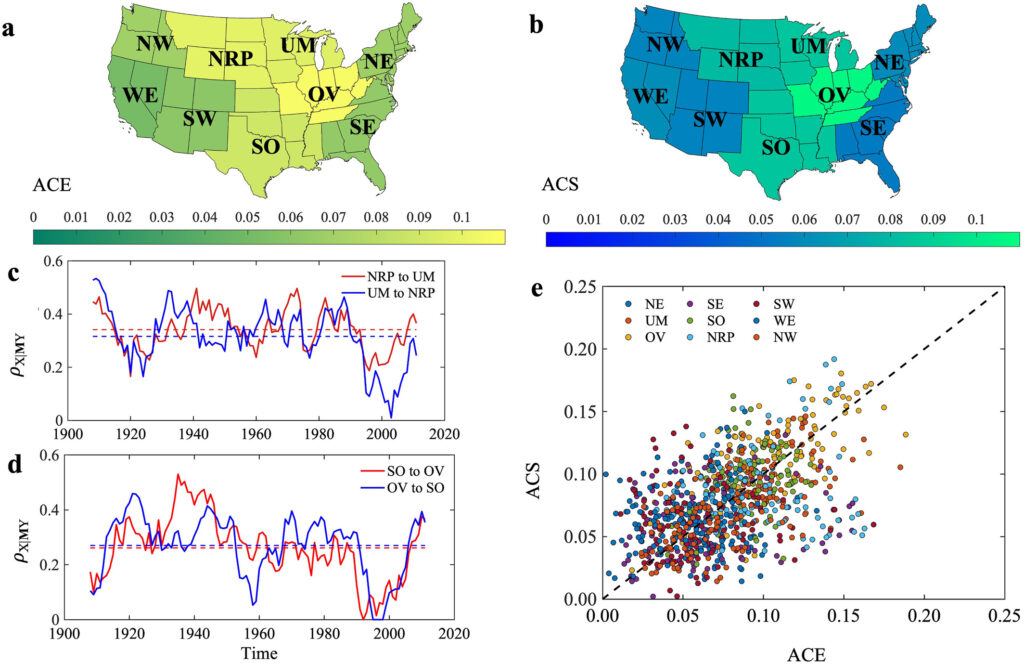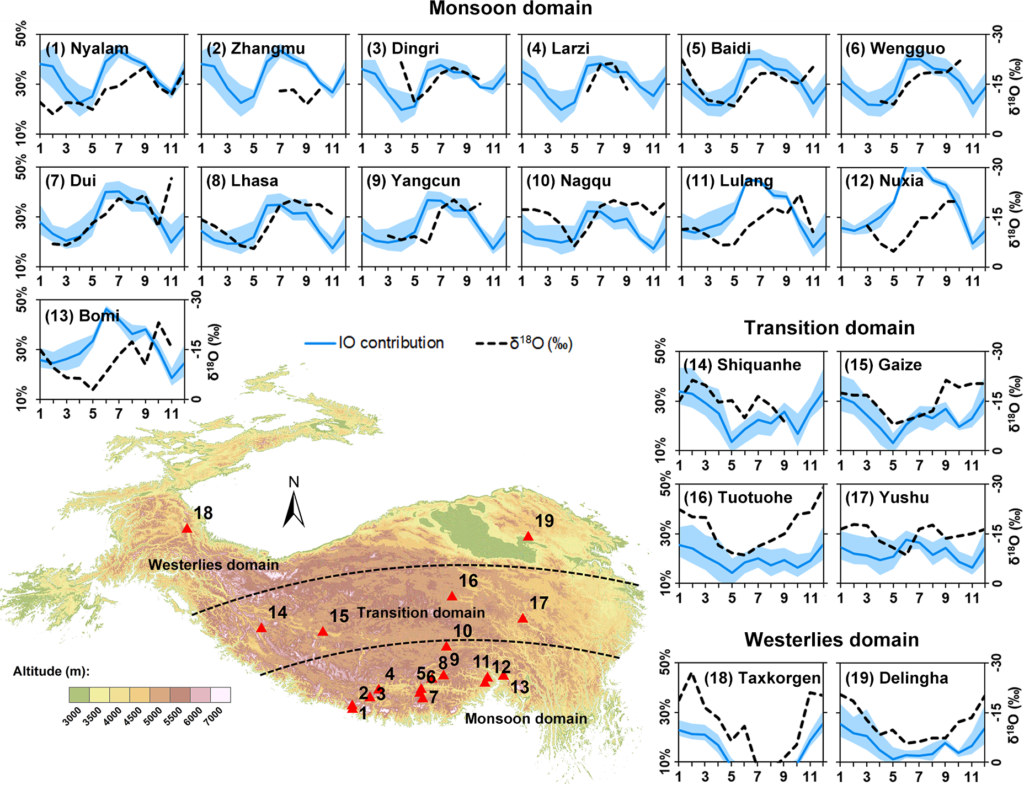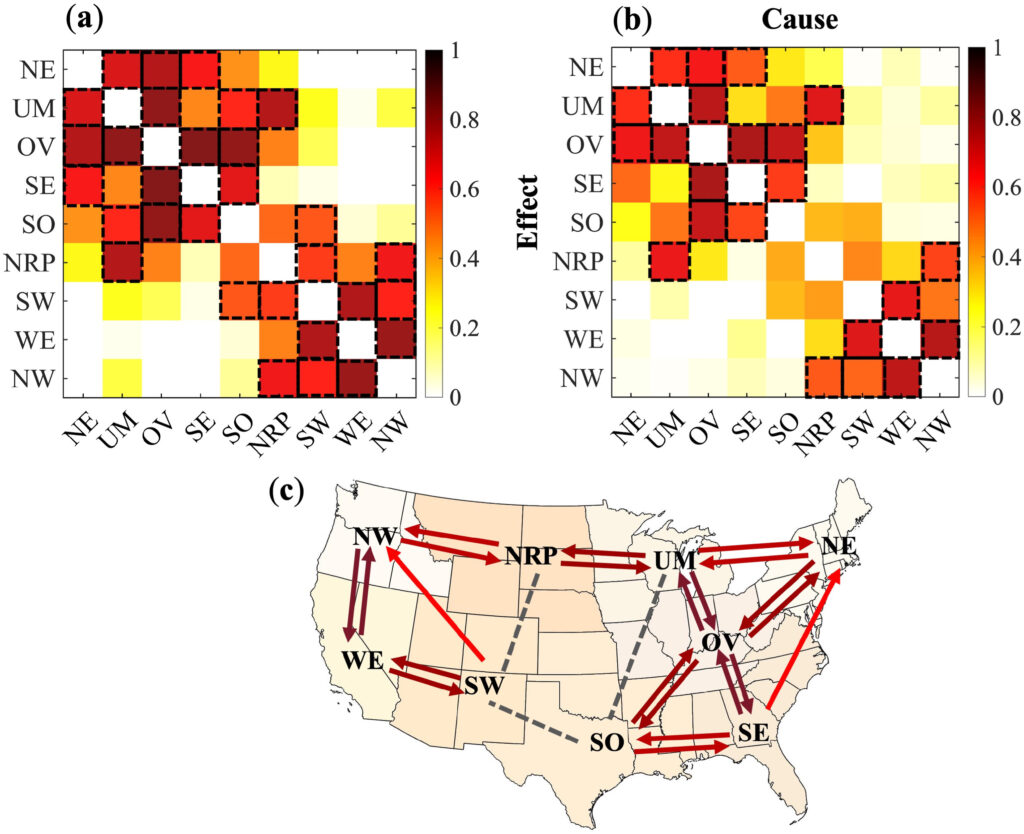Our new paper, “Finding causal gateways of precipitation over the contiguous United States“, is published in Geophysical Research Letters (IF: 5.576). This paper is from the collaboration with the Urban Environment Research Group at Arizona State University (ASU).
The paper and its supplement can be downloaded at https://agupubs.onlinelibrary.wiley.com/doi/10.1029/2022GL101942.
Authors: Xueli Yang, Zhi-Hua Wang, Chenghao Wang, and Ying-Cheng Lai
Abstract: Identifying regions that mediate regional propagation of atmospheric perturbations is important to assessing the susceptibility and resilience of complex hydroclimate systems. Detecting the regional gateways through causal inference, can help unravel the interplay of physical processes and inform projections of future changes. In this study, we characterize the causal interactions among nine climate regions in the contiguous United States using long-term (1901–2018) precipitation data. The constructed causal networks reveal the cross-regional propagation of precipitation perturbations. Results show that the Ohio Valley region acts as an atmospheric gateway for precipitation and moisture transport in the U.S., which is largely regulated by the regional convective uplift. The findings have implications for improving predicative capacity of hydroclimate modeling of regional precipitation.
Plain Language Summary: Successful detection of causality in complex systems is important to unraveling the underlying mechanisms of system dynamics. The dynamic interactions in Earth’s climate system are often nonlinear, weakly or moderately coupled, and essentially non-separable, which renders conventional approaches of causal inference, such as statistical correlation or Granger causality, infeasible or ineffective. Here we applied the convergent cross mapping method to detect causal influence among different climate regions in the contiguous U.S. in response to precipitation perturbations. The results of our study show that the Ohio Valley region, as an atmospheric convergence zone, acts as a regional gateway and mediator for the long-term precipitation perturbations in the U.S. The temporal evolution of causal effect and susceptibility exhibits superposition of climate variability at various time scales, highlighting the impact of prominent climate variabilities such as El Niño–Southern Oscillation on the dynamics of causality.
DOI: https://doi.org/10.1029/2022GL101942





